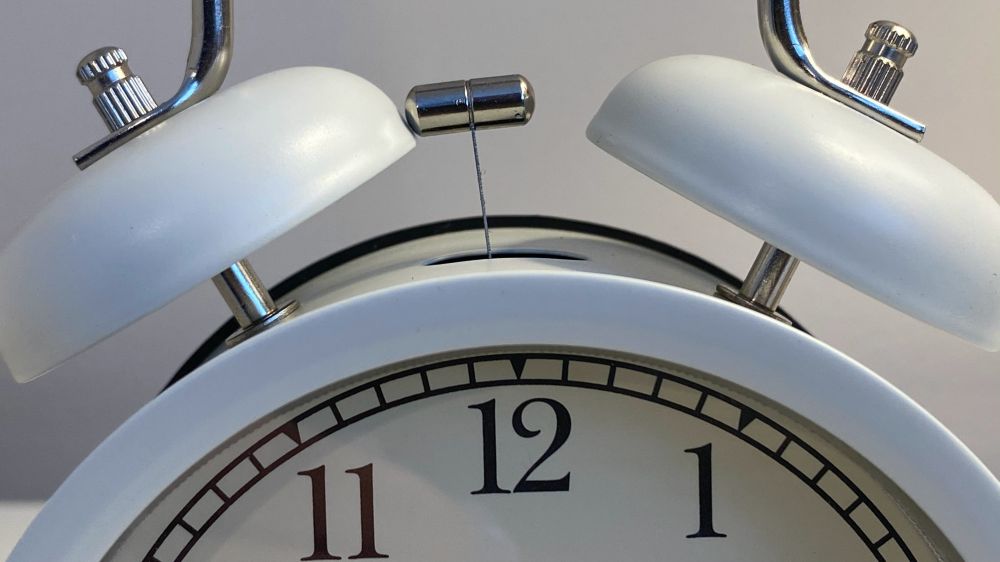A wake-up call for mental and behavioral health: We need to stop hitting the snooze button
There’s a funny meme circulating the internet with a picture of a dog lying on his back, legs stretched in every direction sound asleep while four different alarms are ringing. We laugh because it’s relatable. Many of us have slept through the alarm.
There tend to be two distinct types of people: those who wake up at even the faintest noise and those who, like the dog, could sleep through a dump truck coming through their bedroom. Beyond its humor, the meme prompts reflection on a deeper issue. Alarms do not often bring out the best in us as humans, and our varied responses — whether hypersensitivity or complete disregard — can present challenges in broader contexts, particularly within the realm of mental and behavioral health.
I hesitate to use the word “crisis” here because the term has been diluted like some of our responses to alarms. Almost as if it’s white noise. As someone who has spent her career working in crisis, it’s ingrained in me to have a nonresponse. Crisis is akin to the word “Tuesday,” and that’s a double-edged sword. If we lose the power of the word or the sound of the alarm, we no longer behave with urgency.
In my work, we want to reduce urgency in our approach. In my roles as a clinician and an executive leader responsible for mental and behavioral health services, and now as a consultant, my focus is on reducing the urgency and elevating precision in our approach. Certainly, we want to identify the issue and conduct a rapid assessment, but rushing can be dangerous. Rushing means we miss important subtext that informs our decision making. Anyone working in emergency or crisis response knows there is a dance with urgently arriving but carefully attending. I think about it often as I zoom out on emerging issues we are attempting to address in the mental and behavioral health world.
All too often, we’re quick to call a crisis out, too quick to address it, and it quickly falls apart. This isn’t to say I think we should delay action, but I do urge us to critically think about where we place our urgency.
At one hospital system, we spent a great deal of time analyzing the alarm system after an event. Post-emergency, the team pressed the panic buttons for small incidents at a higher frequency. It made complete sense given recent trauma exposure that we saw an increase in ringing the alarm. However, a growing concern emerged as responders began to react less promptly due to the frequent sounding of alarms. This phenomenon, known as alarm fatigue (1), has been researched across different settings, with several proposed solutions to address this issue.
Think about the button given to patients on a unit that rings to the nurses’ station. That alert rings hundreds of times a day. Sometimes a patient needs assistance to go to the restroom, sometimes they are in pain, and other times because they leaned on it while trying to reach the TV remote. Each alert must be responded to, typically by one nurse. It can become tiresome and because of the sheer number of alarms, responses can be delayed.'
One proposed solution from the research was to increase the threshold for activating the alarm button or to introduce variations in the alarm sounds. Some studies recommend developing metrics to evaluate before and after events to determine the rate of these alarms while others recommend different monitoring modalities to eliminate the alarms altogether. In crisis work, there is a combination of solutions, and it requires a delicate balance.
The reason I find our alarm fatigue and reactions so important in this climate is that we seem to be falling into alarm fatigue when recycling rather than creating solutions.
The mental and behavioral health field has been in crisis for so long that it actually isn’t even appropriate to call it a crisis. It’s the state of the union. A crisis is an event; this is the norm. The alarm has been going off for quite some time and many of us have been like the dog lying on the ground sleeping through it.
This moment calls for a different response. We have long-standing problems, and our partners need help solving them. They might be shouting “We need more beds” but that’s just because it’s the only language they have known. More beds do not address the millions of people trying to access care; it addresses the people sleeping in the emergency department — until those beds are full too (2). Continuing to build beds without diving into shifting the operations, workforce and culture is the equivalent of hitting the snooze button on the alarm. The one we press when we think five more minutes is somehow going to magically alleviate us of our exhaustion. Spoiler alert: it won’t. Just as more beds alone won’t solve the current state of mental and behavioral health.
We need to be at the forefront of designing curriculum and sustainability planning for the hemorrhaging mental health workforce (3), creating efficient workflows to reduce staff burnout and increase the quality of care to patients, developing methods and modalities to operationalize evidence-based care (4), building funding strategies to find pathways for reimbursement, providing executive guidance to leaders in shifting cultures to adapt to change and synthesizing data (5) to tell the story of impact and return on investment with both the funding and community stakeholders.
Alarms only hold significance if they aren’t constantly ringing. A crisis only means something in the context of non-crisis. We cannot control the systems ringing the alarm, but we can control our response to it. I am eager to build on CannonDesign’s behavioral health experience by cultivating experts and enthusiasts who will challenge traditional approaches and reimagine how we can better serve our clients, ultimately making a meaningful impact on the patients who rely on us. Interested in charting this new course? Reach out, let’s drown out the noise of the alarm and have a conversation.
Elizabeth Sysak, PhD, is the Behavioral Health Consulting Leader with Blue Cottage of CannonDesign.
Sources
1 “Monitor Alarm Fatigue: An Integrative Review,” Biomed Instrum Technol
2 "The Vital Role of a Full Continuum of Psychiatric Care Beyond Beds,” Psychiatric Services


